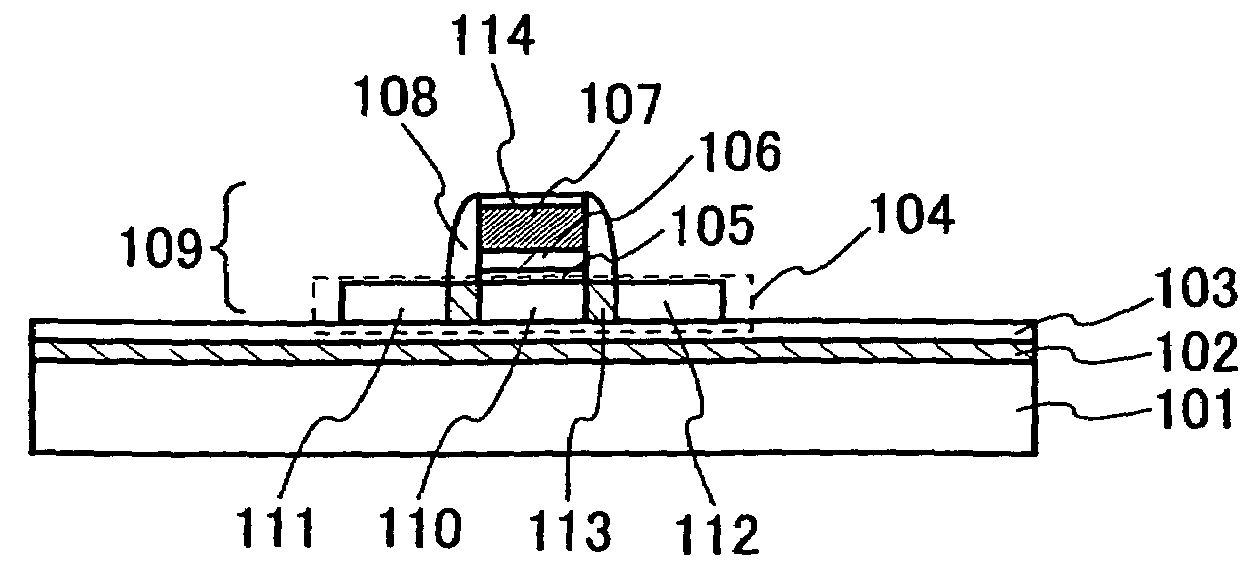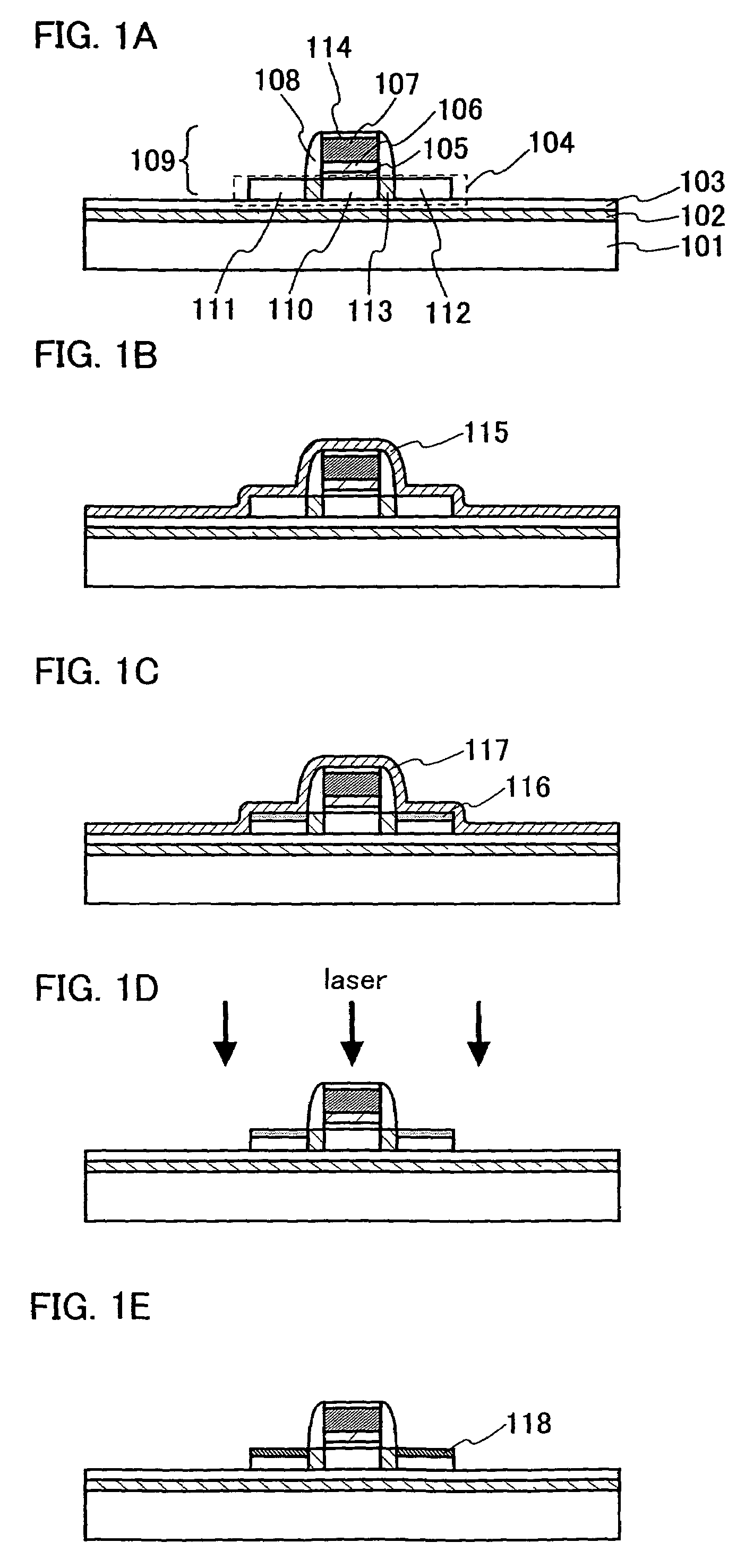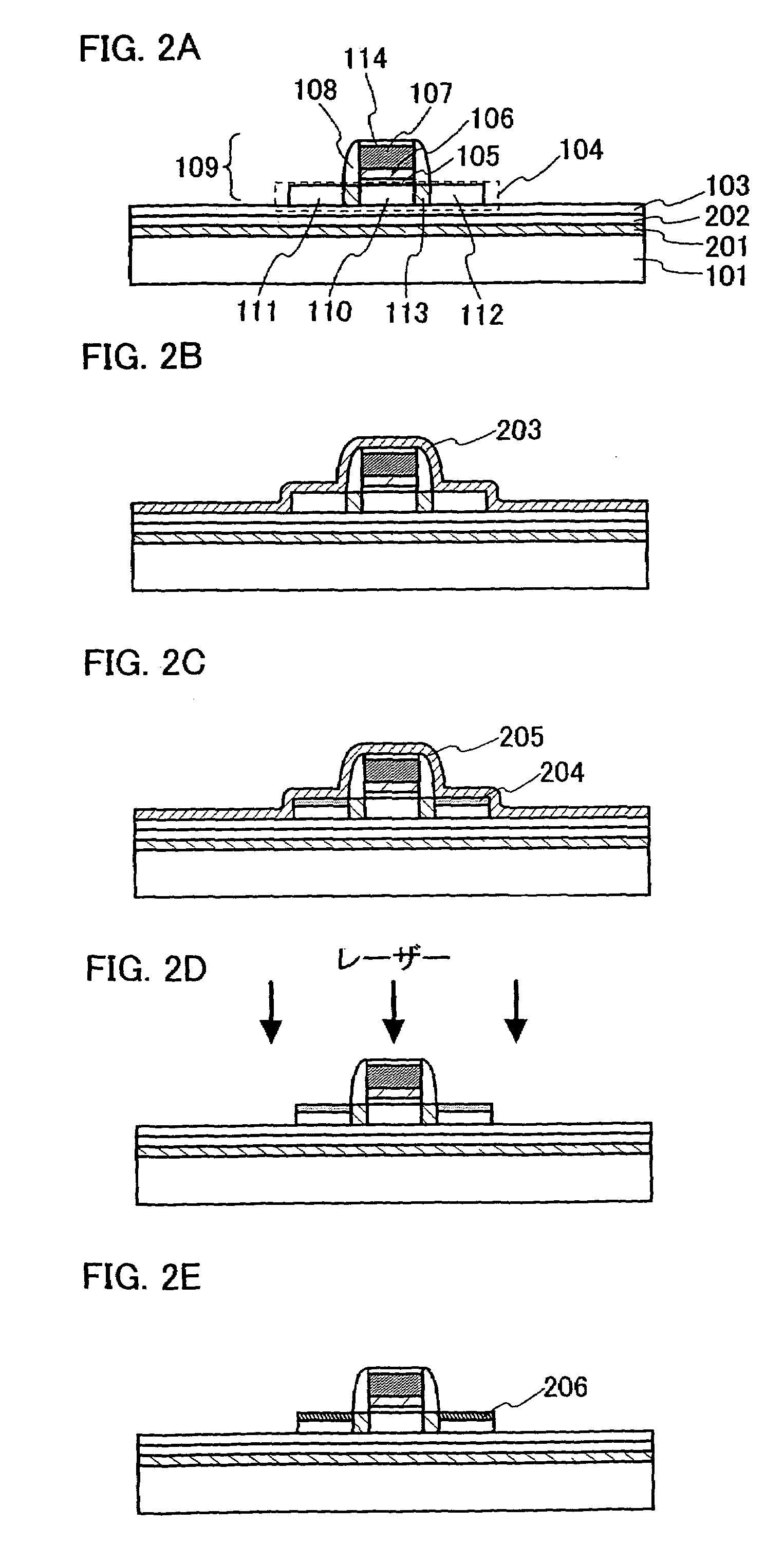Thin film integrated circuit and method for manufacturing the same, CPU, memory, electronic card and electronic device
a technology of integrated circuits and thin films, applied in the direction of semiconductor devices, electrical devices, transistors, etc., can solve the problems of insufficient parasitic insufficient alignment errors, and so as to prevent shrinkage of glass substrates, reduce the resistance of source and drain regions, and form efficiently
- Summary
- Abstract
- Description
- Claims
- Application Information
AI Technical Summary
Benefits of technology
Problems solved by technology
Method used
Image
Examples
embodiment mode 1
[0027]Embodiment Mode 1 describes a salicide process in the case of using a metal for a base film of a thin film integrated circuit. First, the present inventors have examined whether which stage in a salicide process using two-step annealing is effective for conducting laser annealing.
[0028]If second annealing for obtaining a low-resistant silicide is conducted simultaneously to the whole surface of a substrate, annealing at high-temperature of e.g., 800 to 850° C. is needed and thus shrinkage of a glass substrate becomes a problem. In view of the problem, a laser is used for the second annealing so as to locally heat the glass substrate. In this case, shrinkage of the glass substrate is not a problem; however, since laser annealing is conducted after selectively removing an unreacted metal film, the metal film as a heat-absorption layer is reduced more than in the first annealing. Thus, it is conceivable that laser absorption efficiency is low and a silicide reaction is difficult ...
embodiment mode 2
[0036]Embodiment Mode 2 describes a mode where the salicide process described in Embodiment Mode 1 is applied to a process of fixing a thin film integrated circuit to a flexible substrate such as plastic.
[0037]As a substrate over which a separation layer including a thin film integrated circuit, a glass substrate, a quartz substrate, a semiconductor substrate, a ceramic substrate, a metal substrate or the like can be used, and a glass substrate is used in this embodiment mode. This is because a glass substrate is more inexpensive than the other substrates and further, the size of the substrate can be enlarged. Therefore, a plurality of display devices or thin film integrated circuits can be manufactured simultaneously from one large glass substrate, and display devices or thin film integrated circuits can be mass-produced at a lower cost with higher throughput. Moreover, a glass substrate can be applied to a lager and larger screen of a display device.
[0038]Hereinafter, this embodim...
embodiment mode 3
[0053]Embodiment Mode 3 describes a mode where a silicification process can be conducted efficiently by one-time annealing in a thin film integrated circuit over a glass substrate with reference to FIGS. 4A to 4D. Note that a TFT having a sidewall over the glass substrate is identical to that of Embodiment Mode 1, and thus the description thereof is omitted and shown by the same reference numeral.
[0054]A metal film 401 is formed to cover the TFT 109, and a resist 402 is formed over source and drain regions to be silicified (FIG. 4A). The metal film 401 is selectively removed by a mixed solution of ammonia water and hydrogen peroxide solution or the like, thereby partially leaving the metal film 403 over the source and drain regions as shown in FIG. 4B. Then, silicification of the source and drain regions is conducted by laser annealing (FIG. 4C). An excimer laser, a solid-state laser (wavelength: 1064 nm or 532 nm) and the like can be used. If the TFT 109 is formed on the front surf...
PUM
| Property | Measurement | Unit |
|---|---|---|
| temperature | aaaaa | aaaaa |
| temperature | aaaaa | aaaaa |
| temperature | aaaaa | aaaaa |
Abstract
Description
Claims
Application Information
 Login to View More
Login to View More - R&D
- Intellectual Property
- Life Sciences
- Materials
- Tech Scout
- Unparalleled Data Quality
- Higher Quality Content
- 60% Fewer Hallucinations
Browse by: Latest US Patents, China's latest patents, Technical Efficacy Thesaurus, Application Domain, Technology Topic, Popular Technical Reports.
© 2025 PatSnap. All rights reserved.Legal|Privacy policy|Modern Slavery Act Transparency Statement|Sitemap|About US| Contact US: help@patsnap.com



